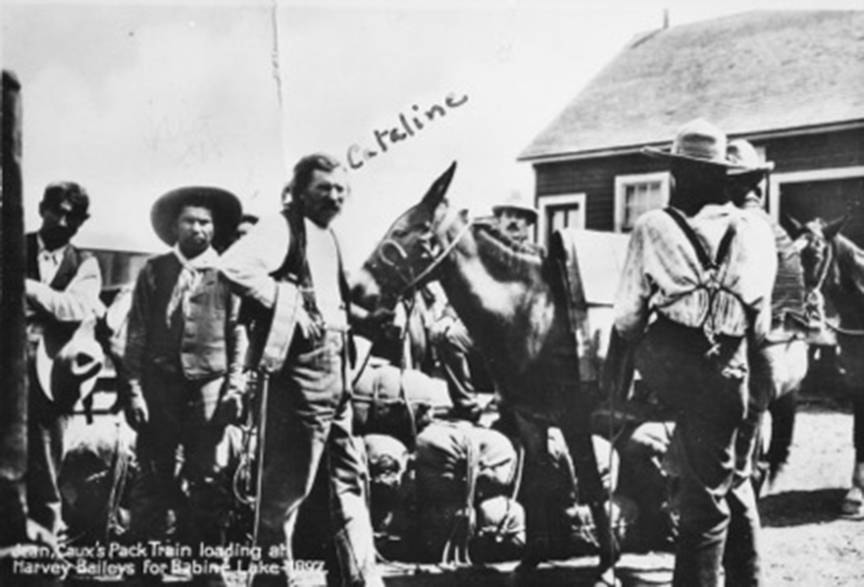© Michael Riis-Christianson and the Lakes District Museum Society
Before construction of the Grand Trunk Pacific Railroad – and even, to a lesser extent, afterward – goods destined for the Lakes District and surrounding areas were transported by pack trains of horses or mules.
Perhaps the most famous packer to operate here was Jean Caux, or “Cataline” as he was commonly known.
Although accounts differ, it is generally accepted that Cataline was born sometime between 1830 and 1832 in either Mexico, Spain, or France. The exact date of his arrival in British Columbia is unknown, but historical records suggest that he operated pack trains in B.C. as early as 1858, when his crews supplied miners participating in the Fraser Canyon gold rush.
Cataline first passed through this area in 1897, when his pack trains (which generally consisted of 50 or 60 mules, each capable of carrying between 250 and 300 pounds) transported goods to gold-seekers in the Klondike. When construction of the Grand Trunk Pacific Railway was announced early in the 20th century, he moved his operations from the lower Cariboo to Quesnel, a community from which he could better serve railway construction crews.
Cataline sometimes wintered his animals in the Babine Lake area, and frequently stopped at the telegraph cabin located in what later became Burns Lake. Trygarn Pelham Lyster (Barney) Mulvany, the founder of Burns Lake, packed for Cataline in 1898, and was reportedly fond of him. One of the photos of Cataline in our collection bears the inscription “Lest we forget – from Bill to Barney, 1951.”
A character not soon forgotten, Cataline had some interesting habits. Reports suggest that he liked to use alcohol as a hair tonic. According to those who knew him, he would often pour a little whisky or cognac into his hand and then rub it vigorously on his head.
“A liddle insida, a liddle outsida,” he’d say to onlookers. “Bon! She maka da hair grow!”
In 1912, after more than a half-century of packing, Cataline retired and moved to Hazelton. He died there and is buried in the cemetery overlooking old Hazelton.
